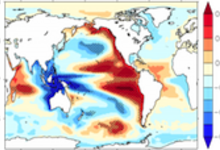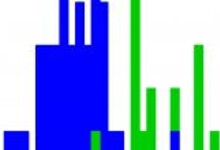Research Highlights
We aim to feature the latest research results from US scientists whose published paper features work that is sponsored by one or more sponsoring agency programs of US CLIVAR (NASA, NOAA, NSF, DOE, ONR). Check out the collection of research highlights below and sort by topic on the right. Interested in submitting an article for consideration? See our Research Highlight Submission Guidelines page for more information.
It is well known that ENSO strongly affects the interannual variability of tropical cyclones in the western North Pacific. New research shows that models can reproduce interannual variability, but none can capture the distinction between eastern Pacific and central Pacific El Niño events that is found in observations.
The Pacific Ocean has a significant influence on global mean surface temperature, as recently demonstrated during the 2015/16 El Niño. New research shows a new way to quantify the role of the Pacific Ocean using sea level information rather than traditional sea surface temperature data.
New research focused on determining how well the occurrence of an ice-free Arctic can be predicted. What the researchers found is that the uncertainty for the prediction of an ice-free Arctic, caused by internal climate variability, amounts to around two decades.
Robust surface ocean currents around Peninsular Florida, namely the Loop and the Florida Currents, are shown to affect the terrestrial wet season of Peninsular Florida. New research shows that differences in the ocean bathymetry (or topography) of two novel numerical climate model integrations can influence the ocean currents and their impact on regional climate.
Recent trends in sea ice have been studied heavily. A less well-understood problem is how sea ice affects the underlying ocean, particularly the poorly observed Southern Ocean. A new study, published in the journal Nature Geoscience, shows how the seasonal drift of Antarctic sea ice may be more important for the global ocean overturning circulation than previously realized.





